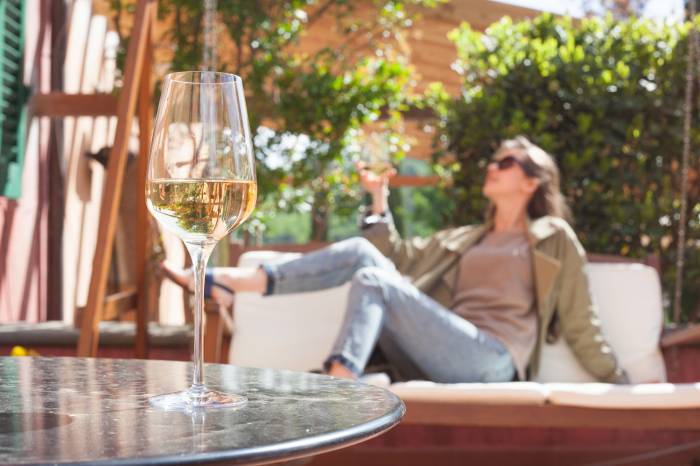Wine tourism in 2025 redefines travel with immersive experiences across ten standout global destinations
Cultural activities, innovative architecture, and sustainable practices transform traditional wine regions into unique travel experiences for visitors worldwide
2025-08-06

Wine tourism in 2025 is evolving with new experiences that go far beyond traditional tastings. Around the world, wine regions are offering immersive activities that combine wine with local culture, fine dining, spectacular landscapes, innovative architecture, and sustainable practices. Ten destinations stand out this year for their originality and the depth of their wine experiences.
La Rioja in Spain remains a benchmark for wine lovers. The region blends centuries-old winemaking traditions with modern innovation. Visitors can tour historic wineries that still use traditional methods, as well as contemporary architectural landmarks like the Marqués de Riscal Wine City designed by Frank Gehry. Other notable sites include Bodegas Ysios by Santiago Calatrava and Bodega Portia by Norman Foster. Beyond tastings, La Rioja offers unique culinary experiences such as tapas tours on Logroño’s Calle Laurel and Michelin-starred restaurants that highlight local cuisine. The Vivanco Museum of Wine Culture provides an interactive look at the region’s history and winemaking heritage.
In Portugal, the Douro Valley is recognized for its terraced vineyards along the Douro River, a UNESCO World Heritage site since 2001. The landscape is shaped by centuries of viticulture. Visitors can explore the valley by traditional rabelo boats or take the historic Douro Train along the riverbank between Régua and Pinhão. Many estates offer tours with port and DOC Douro wine tastings, and some provide boutique accommodations among the vines. During harvest season, guests can participate in grape stomping in stone lagares. The region’s gastronomy is another draw, with restaurants like DOC in Folgosa offering contemporary Portuguese cuisine with panoramic vineyard views.
Bordeaux in France continues to be a global capital of wine, balancing tradition with cultural innovation. La Cité du Vin is a striking museum on the Garonne River that offers an immersive journey through global wine culture using multimedia exhibits in multiple languages. The experience ends with a panoramic tasting room overlooking Bordeaux and its vineyards. Outside the city, visitors can tour legendary châteaux in areas like Saint-Émilion and Médoc, where many estates now offer pairing dinners, bike tours through vineyards, and luxury accommodations. Château Smith Haut Lafitte stands out for its vinotherapy spa using grape-based treatments.
Tuscany in Italy offers classic rural beauty with rolling hills covered in vineyards and cypress trees. In Chianti Classico and other areas like Montalcino or Montepulciano, visitors can stay at agriturismos (farm stays), take cooking classes to learn Tuscan recipes, or enjoy e-bike tours with vineyard picnics. Many medieval castles now house wine bars where guests can taste directly from barrels. The region’s food scene ranges from rustic trattorias to Michelin-starred restaurants set among the vines.
Santorini in Greece is known for its volcanic soils and unique vine training methods that protect grapes from harsh winds and sun. Local varieties like Assyrtiko produce mineral-rich wines with high acidity. Wineries such as Boutari and Santo Wines offer tastings paired with island products on terraces overlooking the caldera. The island also features a wine museum in a cave and opportunities to join early harvests.
Napa Valley in California has become one of America’s top wine tourism destinations thanks to world-class wines, luxury experiences, and constant innovation. Many wineries lead in sustainable practices and offer tours focused on organic farming and renewable energy projects. Activities include hot air balloon rides over vineyards at sunrise, gourmet journeys on the Napa Valley Wine Train, spa treatments using grape extracts, art installations among the vines, and concerts held at wineries.
Mendoza in Argentina sits at the foot of the Andes Mountains and is known for high-altitude vineyards producing Malbecs of great character. The region offers immersive experiences such as “winemaker for a day” programs where visitors can blend their own wines or join harvest celebrations featuring music and dance. Mendoza’s food scene includes cooking classes for local dishes and open-air asados (barbecues) under grape arbors.
South Africa’s Cape Winelands near Cape Town combine award-winning wines with dramatic mountain scenery and rich cultural heritage. Stellenbosch features historic estates founded by Dutch settlers; Franschhoek is known as South Africa’s culinary capital; Paarl boasts pioneering cooperatives. Visitors can explore by hop-on hop-off tram or e-bike safaris through vineyards where wildlife roams freely. Many estates pair wine with art galleries or sculpture gardens.
Kakheti in Georgia is considered the birthplace of wine, with evidence of winemaking dating back 8,000 years. The region preserves ancient techniques such as fermenting wine in buried clay qvevri jars—a method recognized by UNESCO as intangible cultural heritage. Guests can visit family-run cellars to taste amber wines directly from qvevri or join traditional supra feasts featuring elaborate toasts led by a tamada (toastmaster) accompanied by polyphonic singing.
In South Australia, Barossa Valley and McLaren Vale showcase both history and innovation. Barossa is home to century-old Shiraz vines planted by European immigrants; visitors can tour cellars dating back to the 19th century or blend their own wines at Penfolds. McLaren Vale stands out for avant-garde projects like d’Arenberg Cube—a five-story glass structure housing tasting rooms, art installations, and sensory experiences that challenge conventions.
These ten destinations reflect how wine tourism has expanded beyond simple tastings to offer travelers a deeper connection to place through culture, food, architecture, sustainability initiatives, and hands-on participation—making each visit memorable long after the last glass is poured.
Founded in 2007, Vinetur® is a registered trademark of VGSC S.L. with a long history in the wine industry.
VGSC, S.L. with VAT number B70255591 is a spanish company legally registered in the Commercial Register of the city of Santiago de Compostela, with registration number: Bulletin 181, Reference 356049 in Volume 13, Page 107, Section 6, Sheet 45028, Entry 2.
Email: [email protected]
Headquarters and offices located in Vilagarcia de Arousa, Spain.